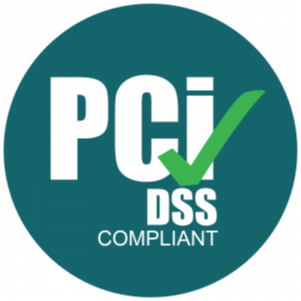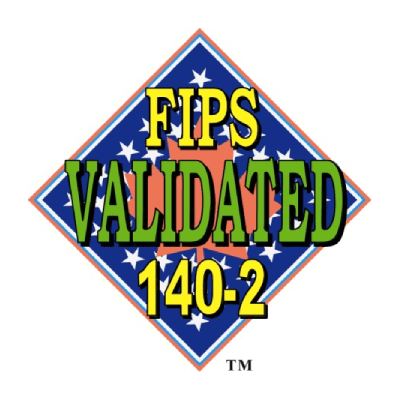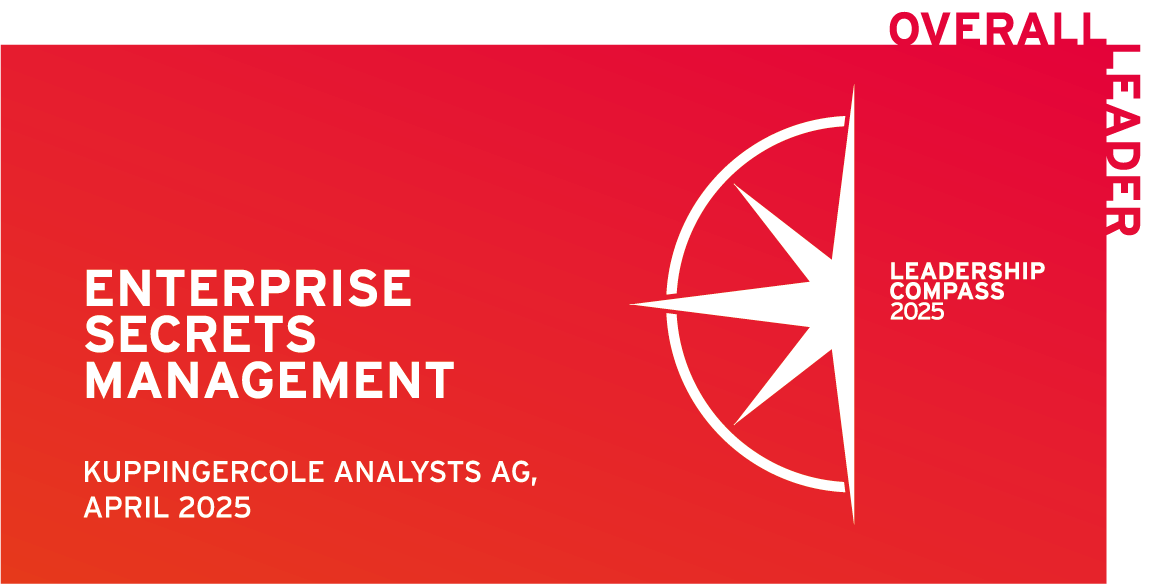Posted by Refael Angel
October 31, 2025
Introduction – Why Organizations Are Moving Toward Secretless
As organizations modernize their security programs, many are adopting more advanced methods of managing sensitive credentials to reduce risks and streamline operations. The “secretless” approach represents a major shift in this domain, allowing applications and systems to access resources without directly handling secrets like passwords, API keys, or certificates. Instead of storing and protecting credentials everywhere, systems prove their identity each time they request access, using short-lived, verifiable authentication rather than static secrets. The result is a cleaner, more controlled model for securing automated and hybrid environments.
It’s essential to understand that “secretless” does not mean the complete elimination of secrets. Secrets still exist, but they’re never exposed to the end client or application. It’s similar to serverless computing: servers are still there, but their management is abstracted, so teams can focus on core business logic rather than infrastructure. By centralizing control, enforcing policies, and automating how credentials are issued and revoked, secretless architectures improve scalability, visibility, and security across complex infrastructures.
But how do organizations get to this ideal secretless state? The transition doesn’t happen overnight. Most teams move through several phases as they modernize their approach to secrets management and identity-based access.
The Four Stages of Secretless Adoption
Secretless adoption happens in stages, each replacing more of the traditional reliance on stored credentials with real-time, identity-based access.
First Stage: Static Secrets
In the first stage, credentials are static—often hardcoded into applications or stored in simple vaults. They rarely change, which makes them easy targets for attackers and a major liability if exposed.
Second Stage: Rotated Secrets
In the second stage, automation enters the picture. Secrets are rotated on a schedule, shrinking the window of exposure. It’s a critical improvement from static credentials, but long-lived secrets still exist within the system.
Third Stage: Dynamic Secrets
This stage introduces Zero Standing Privileges (ZSP). Instead of rotating existing secrets, the system generates temporary, just-in-time credentials that grant access only when needed and expire immediately after. This dramatically shrinks the attack surface by eliminating persistent privileges.
Fourth Stage: The Secretless Model
The fourth and final stage is true secretless operation. By leveraging identity-based authentication methods such as OpenID Connect (OIDC) and SPIFFE, alongside dynamic secrets, organizations reach a point where applications no longer see or handle credentials at all. Secrets are issued, used, and revoked transparently through a central system—creating an “SSO for Machines.”
Each stage builds on existing practices and lets organizations adopt secretless methods incrementally without disrupting operations.

Clarifying Misconceptions About Secretless
One frequent misconception is that “secretless” means there are no secrets at all. As mentioned earlier, secrets still exist, but they are never handled directly by the application or developer. The goal is to remove exposure, not to eliminate the underlying cryptography.
Another common misconception is that secretless authentication simply means using OAuth. OAuth is a valuable protocol, but by design it can rely on long-lived tokens that become dangerous if leaked. The 2025 Drift incident illustrated this risk when attackers used exposed OAuth tokens from a third-party integration to compromise connected Salesforce environments. It serves as a reminder that token-based systems are not automatically secretless if those tokens persist.
True secretless design depends on dynamic, short-lived credentials that disappear after use. Frameworks such as SPIFFE (Secure Production Identity Framework for Everyone) follow this principle by issuing temporary certificates that authenticate workloads without exposing long-lived credentials. This approach separates identity from any single platform and enables secure authentication across diverse environments.
In short, going secretless is not about removing every secret or adopting a single protocol. It is about verifying identity and granting time-bound access that minimizes what attackers can reach and for how long. Trust becomes an operational process, verified at every connection rather than stored in long-lived credentials.
Steps for Adopting Secretless Security
Adopting a secretless model is best approached as a deliberate, step-by-step process built on the principle of Zero Standing Privileges (ZSP). Each phase strengthens the ability to grant access only when needed and for as long as it’s needed, reducing the risks that come with long-lived credentials.
1. Assess and Plan
Start by identifying where static credentials are still in use and where they pose the greatest risk. Databases, cloud services, CI/CD pipelines, and machine-to-machine communications are common starting points. Map these dependencies to understand where automation and identity-based access can deliver the greatest security gains.
2. Transition to Dynamic Secrets
Move from static credentials to dynamic, on-demand secrets that expire automatically. Dynamic credentials reduce the window of exposure and enforce ZSP by ensuring access exists only for the duration of a session or transaction. Automation is key at this stage to ensure consistent policy enforcement and visibility.
3. Integrate Identity-Based Authentication
Adopt standards such as OpenID Connect (OIDC) or SPIFFE to verify identity at the moment of access. This allows workloads, services, and APIs to authenticate through their inherent identity rather than through stored credentials. For machine-to-machine communication, ephemeral certificates or tokens can authenticate requests without creating new long-term secrets.
4. Centralize and Automate Control
Consolidate policy management and credential issuance within a central control plane. Unified policy enforcement ensures consistent security across hybrid environments and simplifies auditing. Centralization also supports fine-grained access models such as Role-Based and Attribute-Based Access Control.
5. Extend to AI and Automated Agents
AI systems and agents are becoming a new class of non-human identities. They often need access to APIs, data sources, and other services, which historically required embedded credentials. Applying secretless principles to these agents ensures they receive short-lived, verifiable identities at runtime, protecting sensitive data while maintaining autonomy.
6. Monitor and Refine
Continuous auditing and monitoring keep access aligned with the principle of least privilege. Use detailed logs and analytics to detect anomalies, validate automation, and refine policies as environments change. The goal is continuous verification and immediate expiration of credentials when they are no longer needed.
Each of these steps builds maturity in adopting secretless security. By embedding ZSP and identity-based authentication into every phase, organizations can replace static secrets with verifiable, ephemeral access that scales securely across both human and machine identities.
How Akeyless Enables the Move to Secretless
Achieving a true secretless architecture requires more than removing secrets from applications. It demands a platform capable of establishing identity, enforcing policy, and automating access across every environment. Akeyless is engineered from the ground up to make this possible. It bridges the gap between traditional secrets management and fully secretless operation, providing the foundation to move from static credentials to real-time, identity-based access.
Solving the “Secret Zero” Problem
Every secrets management platform faces the same initial challenge: how does a workload or application prove its identity to the system before it has any credentials? This “Secret Zero” problem defines the starting point for trust.
Akeyless solves it by integrating with trusted identity providers already present in the environment. No bootstrap secrets are required. Workloads can authenticate through:
- Cloud IAM roles in AWS, Azure, or Google Cloud.
- Kubernetes service accounts, verifying workloads through their native identity.
- Akeyless Universal Identity, which provides a single, auto-rotating credential for any environment, including on-premises infrastructure where cloud IAM is not available.
This flexible framework eliminates manual credential injection and establishes a verifiable root of identity for every workload, container, and service.
Akeyless Secretless Workflow in Action
Once a workload’s identity is verified, Akeyless enables access to resources without ever exposing a credential to the application. This process can be visualized as a simple, repeatable workflow:
- Authentication: The application authenticates to Akeyless using its verified identity (for example, an AWS IAM role or Kubernetes service account).
- Authorization: Akeyless checks policy to confirm that the workload is approved to access the requested resource.
- Dynamic Credential Generation: Akeyless connects to the target system and generates a short-lived, just-in-time credential such as a temporary database user.
- Transparent Injection: Instead of returning the credential to the application, Akeyless injects it directly into the session or environment. The application uses it to connect, and the credential expires immediately after.
This workflow enforces Zero Standing Privileges by ensuring credentials exist only for the brief period they are needed. Secrets are never stored or visible to the workload, and every action is fully logged for visibility and auditability.
Broad Integration and Federated Identity
A secretless model must integrate seamlessly into the systems organizations already depend on. Akeyless supports a wide range of databases, cloud providers, CI/CD pipelines, and infrastructure-as-code tools so teams can embed security directly into their existing workflows.
Beyond these integrations, Akeyless provides advanced identity federation capabilities through compliance with the SPIFFE (Secure Production Identity Framework for Everyone) standard. Acting as a SPIFFE-compliant workload attestation authority, Akeyless issues short-lived, cryptographically verifiable identities known as SVIDs (SPIFFE Verifiable Identity Documents).
This allows secure authentication between workloads running in any environment—across clouds, Kubernetes clusters, and on-premises systems—creating a unified, platform-agnostic layer of trust.
Securing the Next Generation of Workloads: AI Agents
As AI systems become new classes of non-human identities, they face the same credential management challenges that traditional workloads once did. Hardcoded API keys or long-lived tokens expose significant risk.
Akeyless SecretlessAI extends these principles to AI agents, giving them dynamic, identity-based access so they can operate safely without relying on static API keys or tokens. This allows AI-driven workloads to run autonomously while maintaining full adherence to Zero Trust and Zero Standing Privilege principles.
Benefits and Conclusion
Secretless access eliminates one of the most persistent risks in security: long-lived credentials. By replacing static secrets with dynamic, identity-based access, organizations gain stronger control, simpler compliance, and consistent governance across environments.
At its core, going secretless is about redefining trust. Akeyless ensures that trust is verified every time access is requested by unifying identity verification, credential lifecycle management, and policy automation into one continuous process. The result is Zero Trust, Zero Standing Privileges, and centralized governance made practical at enterprise scale.
Frequently Asked Questions About Secretless Adoption
Secretless adoption is the process of moving from traditional secrets management to identity-based, ephemeral access. Systems authenticate dynamically through verified identities instead of storing credentials.
It reduces the risk of credential theft, simplifies governance, and enforces Zero Standing Privileges by ensuring no long-lived credentials exist anywhere in the environment.
Akeyless provides the infrastructure for secretless adoption through dynamic credential generation, centralized policy enforcement, and integration with identity standards like SPIFFE and OpenID Connect.
Yes. Akeyless SecretlessAI extends secretless access to AI agents by issuing short-lived, identity-verified credentials at runtime, removing the need for static API keys or tokens.













